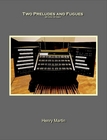We’re pleased to announce our Winter Sale and 2019 price reductions. The sale began Black Friday as a celebration of our merger with CLR Resources, and will continue until January 1 EXTENDED TO January 7!
All sets from CLR are on sale for 15% off, and the following price reductions have been made to our Evensong sets:
1983 Schantz – Price reduced from $149 to $99
1926 Wangerin – Wet reduced from $79 to $69, Dry from $59 to $49
Also, in response to a few requests, the CUI 17 rank Schlicker is now available as a separate purchase and download.
Happy/Merry Whatever You Celebrate!
Direct links:
- University of Redlands 1927 Casavant – 73 ranks, 4 manuals.* (Sale price $335)
- St. Mark’s Episcopal, Glendale – 1929 E.M. Skinner* (Sale price $293)
- Concordia University, Irvine – 55 rank Casavant and 17 rank Schlicker* (Sale price $250)
- Concordia University, Irvine – 17 rank Schlicker* ($49)
- Christ Cathedral (formerly Crystal Cathedral) Arboretum – 82 rank Aeolian-Skinner, G. Donald Harrison* (Sale price $293)
- Covenant Presbyterian – 1966 Aeolian-Skinner – 81 Ranks* (Sale price $297)
- St. Philip’s ELCA, Fridley, Minnesota – 1983 Schantz, 50 ranks ($99)
- Madison Masonic Center, Madison, Wisconsin – 1926 Wangerin, 43 ranks ($69 wet, $49 dry)
- First Baptist Church of Riverside – 1966 Schantz




